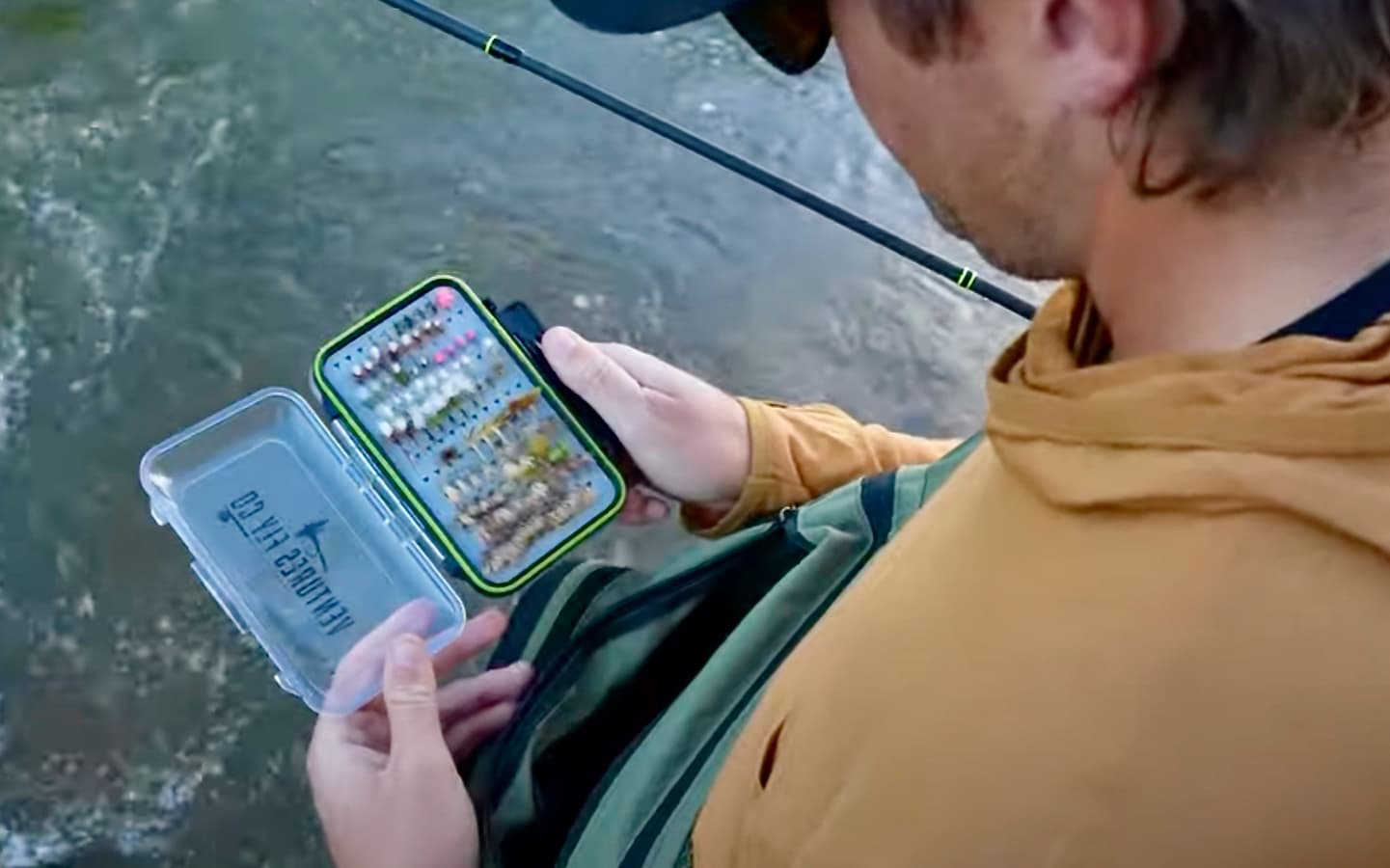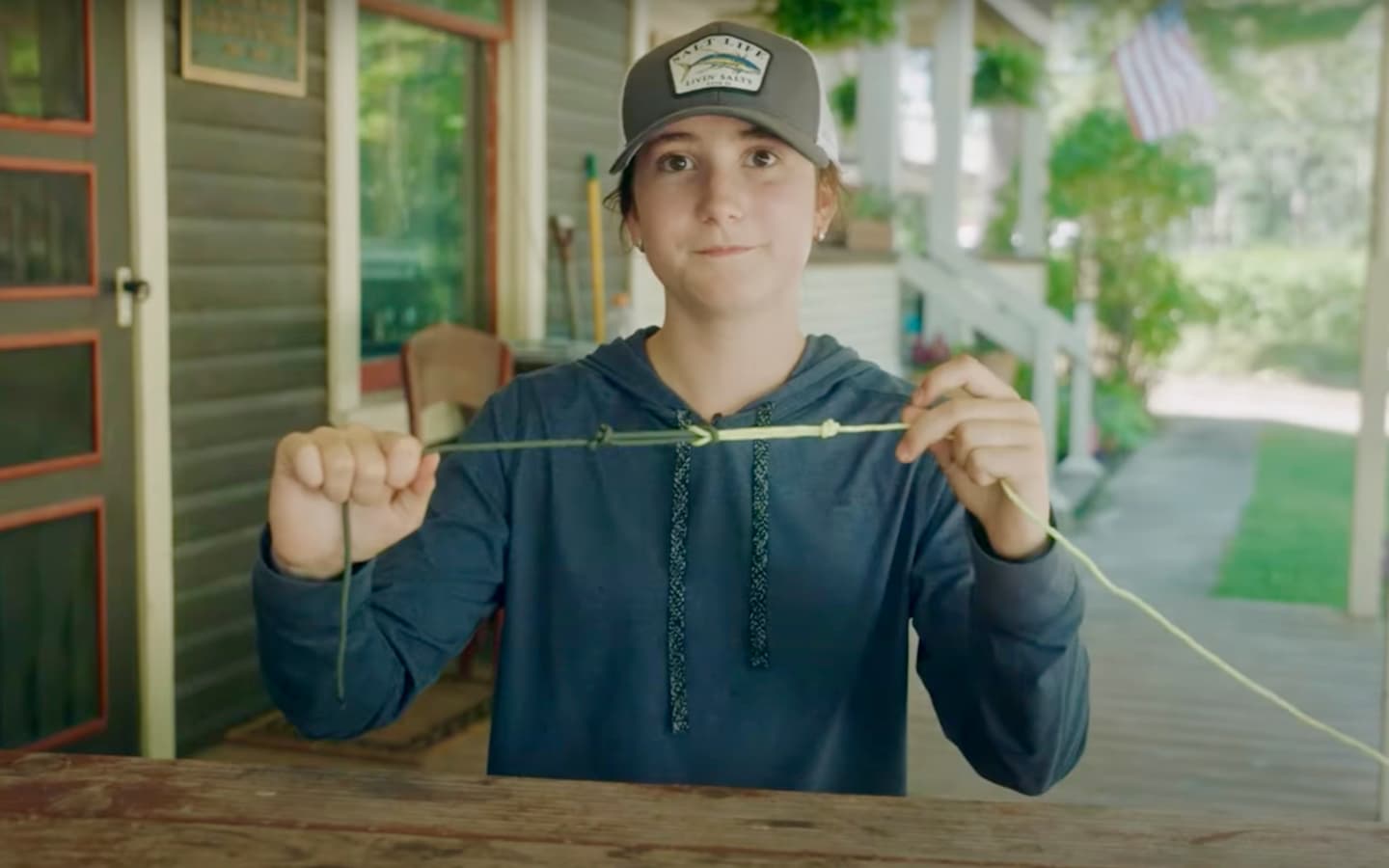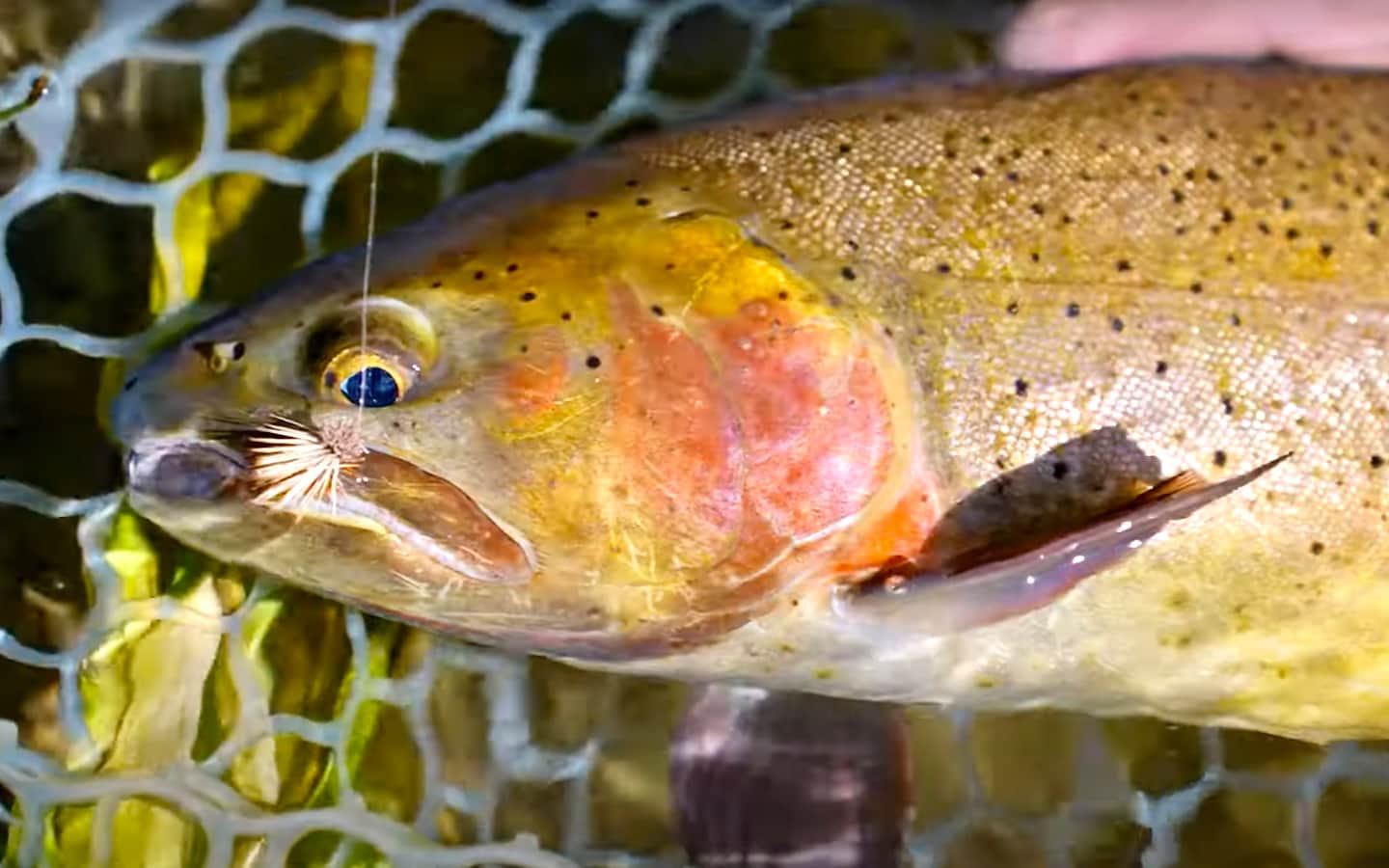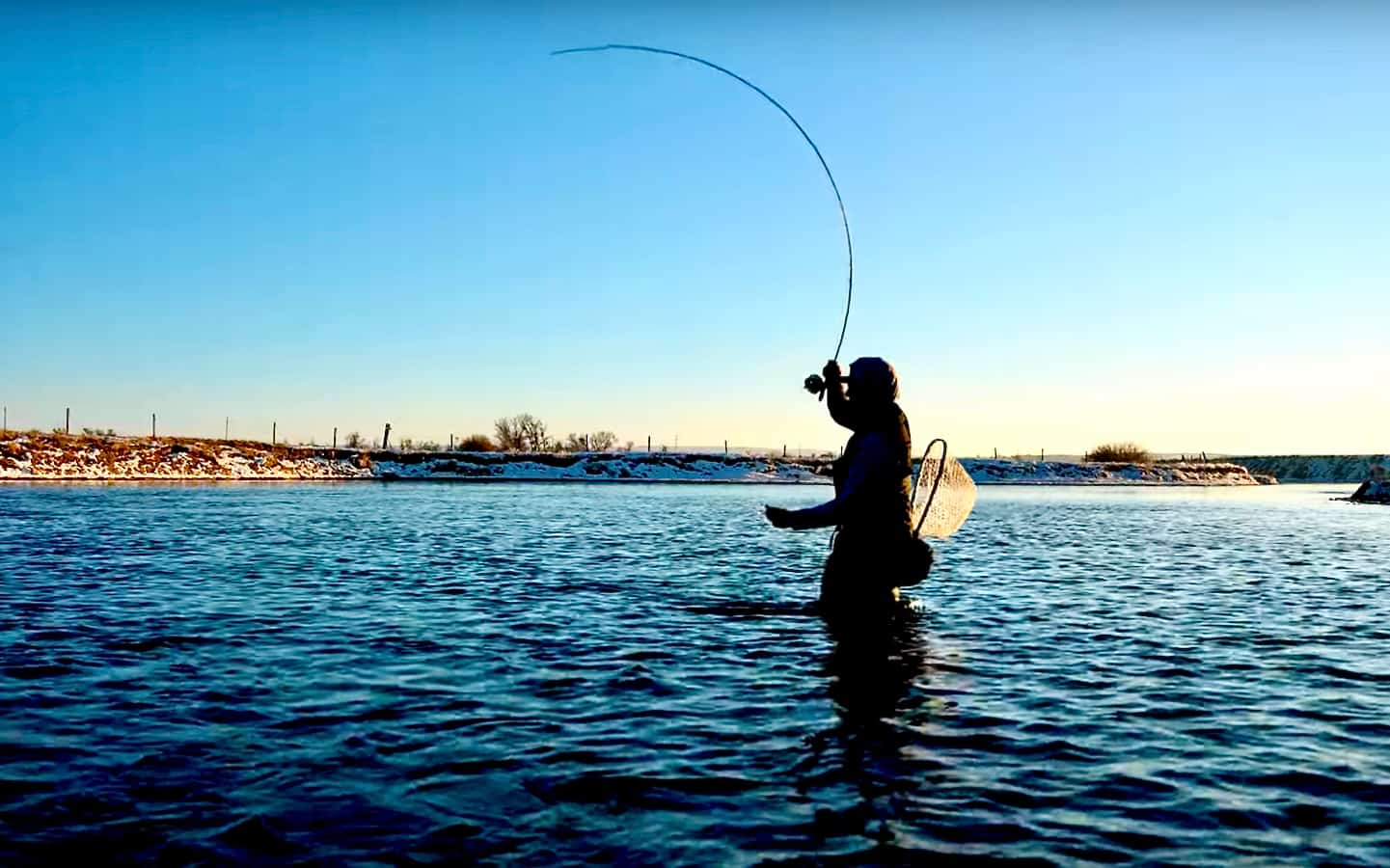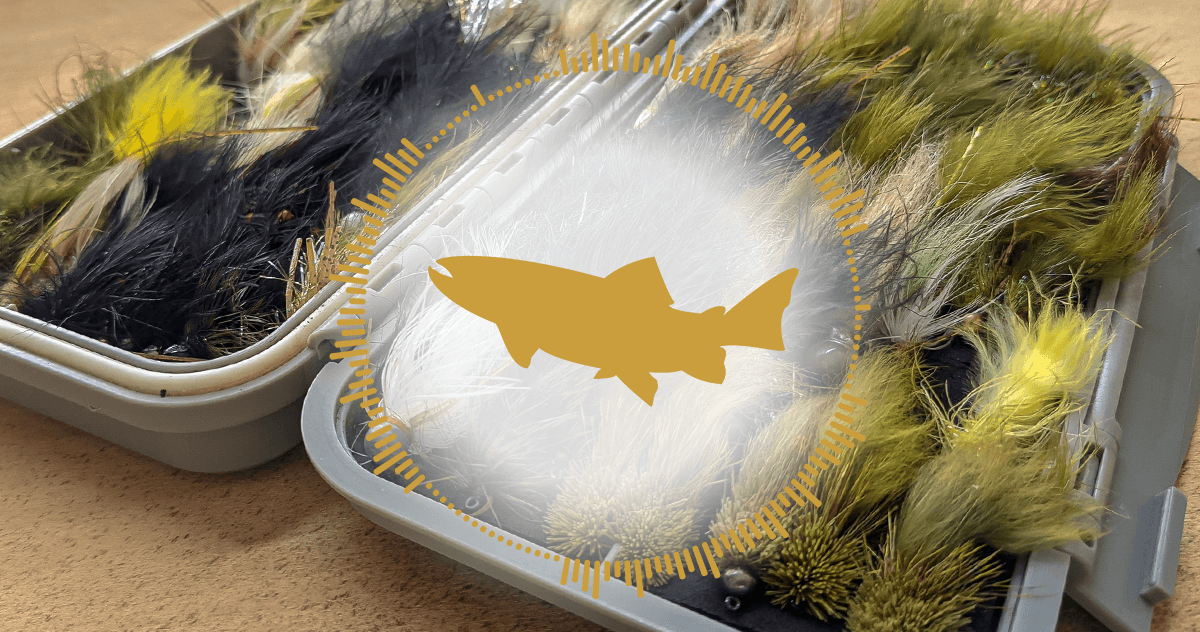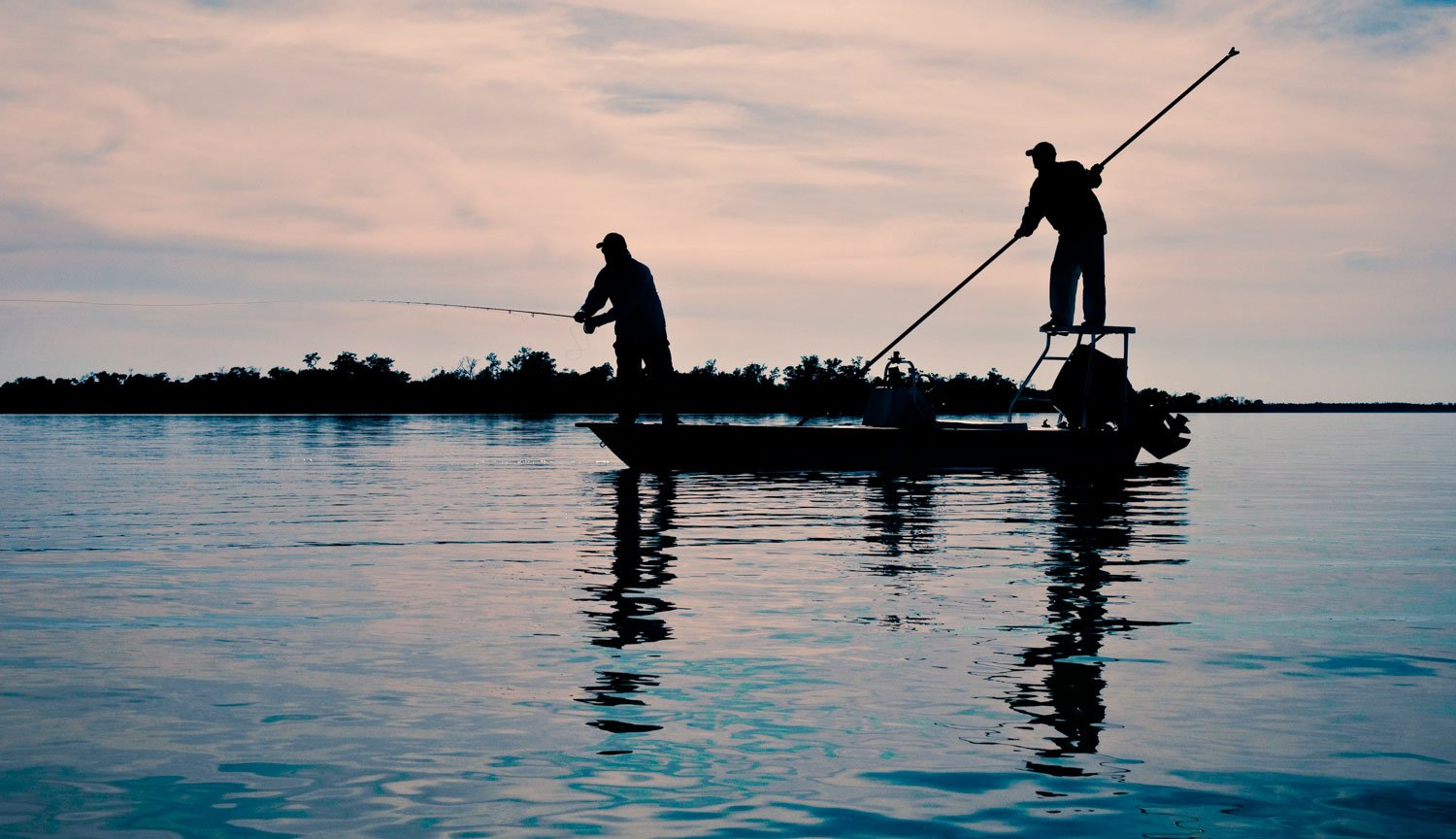Deep Thoughts
LOSTMANS RIVER IN THE lower Everglades is a long skiff ride from Flamingo, but the river runs deep and spills into First Bay before reaching the Gulf of Mexico, and you never know what you’ll catch there. A few years back, a couple of friends and I rode more than two hours to fish the area, arriving at the mouth of the river around noon. Clouds loomed on the horizon, and an outgoing tide had enticed a few schools of finger mullet and other baitfish to the area.
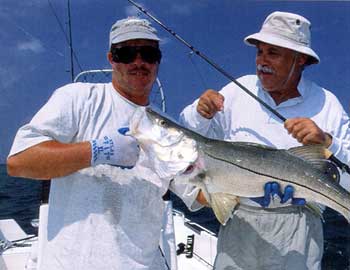
Capt. Scott Hamilton (left) holds a fat snook taken by the author in 20 feet of water using a fast-sinking, weight-forward line.
Poor visibility limited our ability to sight-cast, so we went with 9- and 10-weight rods and began blind-casting fast-sinking lines and six-inch streamers into the outgoing current as we drifted. Occasionally, we anchored on a shallow oyster bar and cast across the current, letting the fly swing on our retrieve. Our casts averaged 70 to feet and covered a lot of water. Two of us fished while the other tended the skiff, and we switched up each time someone landed a fish. Within a couple of hours, we had taken ladyfish, some nice jacks, a couple of small snook, and had jumped a baby tarpon. But we were hoping for something bigger, perhaps a mature snook.
During one of the runs upcurrent, we decided to head farther into the river before drifting, simply to cover new ground. One of my friends used the pushpole to keep us away from the mangrove shoreline, and the other decided to re-rig his leader and change flies.
Finally, I felt the line tighten. Instinctively, I hit back with a strip-strike. It felt solid, like hard bottom or an oyster bar. My friends laughed as I said a few four-letter words in English and a few five- and six-letter words in Spanish.
As we drifted into a great-looking area, I made a few casts without a strike. Thinking the fly needed to be deeper, I let it sink farther with each retrieve. Finally, I felt the line tighten. Instinctively, I hit back with a strip-strike. It felt solid, like hard bottom or an oyster bar. My friends laughed as I said a few four-letter words in English and a few five- and six-letter words in Spanish. We started the engine and headed upstream to free the fly. About that time, however, the solid bottom began to move slowly downstream, and I realized I had a fish on. My heart started to beat faster, excitement grew, and I began a tussle with a very large fish that hardly realized he was hooked.
The fish moved with the current. We followed and, two hours later, far from the river’s mouth where the water is not too deep, the fish showed no signs of tiring. With the rod partly in the water and a deep bend in the butt section, I fought him mostly with the fly fine, giving it all I had.
Soon, low clouds covered the sky, and the water began to ripple in a light breeze, which turned into a strong wind. White caps formed on top of four-foot waves. Heavy rains made the mainland barely visible. Growing tired on the rocking skiff, I had a hard time applying pressure to the fish. And as weather got worse, I tried harder and finally broke him off.
On the dark ride back to the marina, we concluded that I had never really moved the fish and it had not yet begun to fight. I don’t know that I would have ever landed it. The fish must have been a big jewfish, or goliath grouper as it now named, which can grow to more than 700 pounds. A big tarpon would have jumped, and a big shark would have cut the shock tippet. You never know what you’re going to catch when fishing deep in the salt.
Deepwater Tackle
You can fish deep in salt water at the mouths of rivers; over reefs; around structure, such as a sunken boat or marker; in the many channels between bonefish or redfish flats; and in blue water. Fishing deep with sinking lines, I have taken tarpon, snook, seatrout, redfish, tripletail, and pompano; many varieties of snapper, grouper and jacks; several species of bonitos and tunas; as well as mackerel, kingfish, bluefish, stripers, and other species.
In selecting tackle, you must first decide how deep you need to go and therefore the type and density of the fly line. After that, find the proper rod and then the reel to fight the fish with.
Fly Lines: You don’t always need the fastest-sinking line in the shop. Often, a slow-sinking line is sufficient, and you might want to consider a clear slow-sinking or intermediate fly line. In clear water like you’ll find over a Bahamian reef, many fish will come from 20 feet below the fly to take a presentation on these “invisible” lines, which also have applications in basins and shallow river mouths of the brackish backcountry. But if you choose a clear line overline your rod by one weight size and they will cast better for you.

This yellowtail snapper hit a 1/0 Crystal Shrimp fished about 30 feet deep.
Most of the time, however, you’ll need a fast-sinking line — either because need to get the fly deeper or you need line that will sink in strong current both. Most rivers and river mouths, low reefs and wrecks, and channels between flats require fast-sinking lines. To go deep, you have a choice of three line configurations: a shooting-head rig, an integrated head, or a full-sinking weight-forward line.
A shooting-head rig usually has a 30-foot fast-sinking head connected via loop-to-loop to 100 feet of running line (purchased separately). This rig, if matched properly to your rod, will cast very far and sink very fast due to the skinny running line. But it takes an expert who’s into creating such heads to help you. Heads are deep and complex, but the rig works great when everything is right.
An integrated head — in which the head and the running line are all one fly line — requires less expertise and is used by most anglers to go deep. You buy these lines by the weight of the sinking head, such as 250 grains, 375 grains, and so on. I find that 275- to 300-grain lines match most 9-weight rods, and 375 grains suit a 10-weight. The primary drawback is that integrated heads generally have a fat running line that slows the line’s descent. All in all, it’s a great compromise. If you’ve never used a fast-sinking line with a shooting head, I recommend an integrated fly line. I still use them a lot.
If you need to go very deep, say 20 or 40 feet or more, you need a specialized fly line. While a shooting head of 500 or 850 grains will sink very fast, it often rises on the retrieve and isn’t fun to cast. For deep-water angling, I prefer to use a “full” fast-sinking weight-forward line — full in that the running line and head are each fast-sinking. These lines are easier to cast and, when retrieved, stay down all the way to the boat, keeping your fly deep for a longer period of time.
Rods: While I’ve fished fast-sinking lines on 6- and 7-weight rods and, to go really deep, on 12-weights, my bread-and-butter rods for deep water are 9- and 10-weights. Coupled with a 300-grain line, these rods fish deep, have the muscle to cast into the wind, and are strong enough to fight a large fish. And if you want a rod just for fast-sinking lines, I recommend a rod shorter than nine feet, say around 8 feet 8 inches. These rods are very light, cast all day without tiring you out, and offer great leverage against big fish. My 8-foot 8-inch 10-weight is a favorite.
Reels: Any high-quality saltwater fly reel, with a smooth drag and a large arbor, will do just fine. Capacity for sinking lines is the same as with floating lines: for an 8-,
9-, or 10-weight rod, you’ll need around 200 yards of 20-pound backing. For bigger weights, especially rods for fishing the blue water, you’ll need around 300 yards of 30-pound backing to handle the long runs of the pelagic fish, such as tunas and kingfish. Bottom-dwelling fish will not make long runs.
Leaders: Contrary to what you may have heard, you need a long leader to fish deep. If the water is off-color or cloudy, you can get away with something shorter, but most often, a 9-foot leader with three feet of tippet makes a good end to your deep-water line. When in need of a shock tippet, I like No. 3 or No. 4 wire for mackerel and barracudas and around 40-pound mono for snook and baby tarpon.
In very clear water, like you’ll find in the Bahamas, I use a 10- or 11-foot leader, especially if the conditions are calm. Remember that if you use leaders that are only three to five feet long, you’ll not catch much more than bold little jacks, baby snappers, and such. And because a sinking line travels much faster and turns over a fly easier, you can get away with a thinner butt section, like 25-pound test, and gain the advantage of faster descent.
Flies: In the deep, weighted Clousers, Deceivers, Crystal Shrimps, Muddlers, and other flies that imitate minnows are your best options. Keep in mind that the patterns will need to be larger than you would use on shallow flats. A four- to six-inch fly usually is not too big. Colors range from the realistic white with green or blue backs to all-chartreuse or yellow. For off-color water, cast something that is all black. I tie most of these flies to the tippet or shock tippet with a Duncan loop knot.
Final Tips
Approach a shallow wreck, buoy, or marker same care you approach fish in the flats. You may not see fish streak away as you would see in the flats, but if you run the engine too close to the fish-holding water, you’ll spook fish. If you make a noisy approach, you’ll catch only the little ones.
An electric motor will help you approach deep-water targets with relative quiet. If you don’t have an electric, try making a calculated drift from more than 100 feet away — and on flat, calm days from 200 feet.
Also, some anglers retrieve the fly too fast when they fish a sinking line. Try a slow retrieve. You want the fly to stay deep as long as you can. At 70 feet away, even a subtle strip is imparted to the fly. Good luck, and bring a camera to photograph that deepwater giant.

